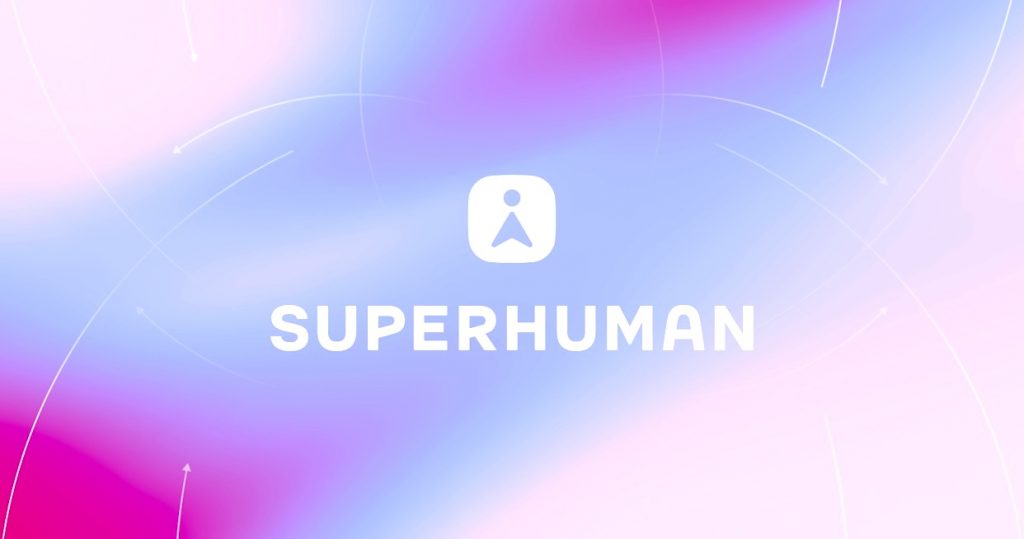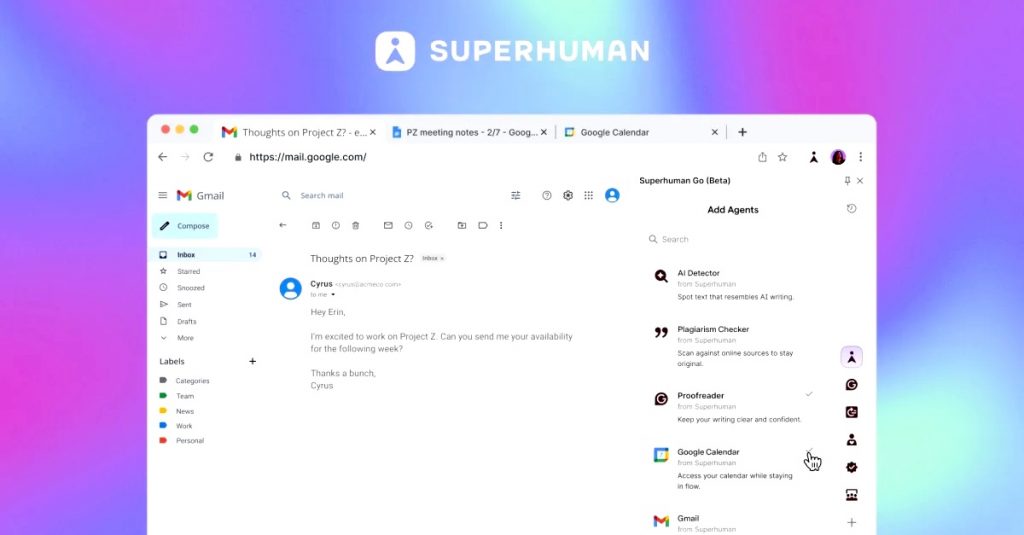Writing assistant Grammarly announced a comprehensive rebrand to Superhuman on Tuesday, uniting its 40 million daily users under a new AI-powered productivity platform that positions the company to directly compete with Notion and Google Workspace. The rebrand coincides with the launch of Superhuman Go, an AI assistant that connects to over 100 applications to provide contextual suggestions across users’ workflows.
The transformation follows strategic acquisitions that reshaped the company’s vision beyond grammar checking. Grammarly acquired productivity platform Coda in December 2024 and email client Superhuman Mail in July, bringing Coda co-founder Shishir Mehrotra aboard as CEO. “People perceive this purely as a grammar tool, when it’s really about integrating AI directly into users’ workflows,” Mehrotra told reporters, explaining the rationale for abandoning the established brand.
The decision to rebrand away from “Grammarly”—a name with significant recognition and brand equity built over more than a decade—signals how dramatically the company’s ambitions have expanded. Moving from a focused grammar and writing tool to a comprehensive productivity platform requires repositioning that the old name couldn’t support.

AI Assistant Targets Productivity Gap
Superhuman Go represents the centerpiece of the company’s evolution from writing assistant to comprehensive productivity suite. The AI helper operates within users’ existing browser tabs, pulling contextual information from CRM systems, calendars, and other connected tools to automate routine tasks. In demonstrations, the system can schedule meetings based on Google Calendar availability, draft summaries from previous meeting notes, or create engineering tickets directly from customer support correspondence.
“While other AI tools require you to change how you work, Go learns how you work and adapts to you,” said Noam Lovinsky, Superhuman’s Chief Product Officer. The assistant launches with dozens of AI agents available through the new Superhuman Agent Store, including partnerships with companies like Speechify, Quizlet, and Fireflies.
The contextual awareness differentiates Superhuman Go from standalone AI assistants that require manual context provision. By integrating across existing tools, the system theoretically reduces friction that makes many AI assistants cumbersome to use. Whether this integration actually delivers productivity gains compared to simpler focused tools remains to be tested in real-world usage.
Current Grammarly Pro subscribers will receive Superhuman Go access at no additional charge until February 1, 2026, though the company hasn’t disclosed pricing beyond that date. The Pro plan costs $12 monthly with annual payment, while the Business plan runs $33 monthly with access to Superhuman Mail.
Strategic Positioning Against Tech Giants
The rebrand signals Superhuman’s ambitions to challenge established productivity platforms as companies struggle to achieve ROI from fragmented AI tools. Over half of workers use AI for productivity enhancement, yet many tools operate in isolation, forcing users to manually provide context between applications. “Most people spend too much time managing their tools and switching between apps instead of doing their actual work,” said Luke Benke, Head of Enterprise Product.
This observation captures a genuine pain point in knowledge work. The average worker switches between applications dozens of times per hour, and each context switch carries cognitive overhead. If Superhuman Go genuinely reduces this friction through intelligent cross-app integration, the productivity impact could prove substantial.
The company’s “compound startup” approach maintains separate business units for email, documents, and AI assistant while leveraging shared infrastructure. This strategy emerges as competitors like Notion launch autonomous AI agents and Google expands AI capabilities across Workspace.
The compound startup structure allows specialized teams to optimize individual products while benefiting from centralized technology development and data integration. However, it also introduces coordination complexity and potential redundancy across business units.
Market Context and Competitive Dynamics
Superhuman enters an increasingly crowded AI productivity space where numerous startups and tech giants compete for workspace attention. Notion’s AI features, Microsoft Copilot, Google’s Workspace AI, and specialized tools like Mem and Reflect all target similar automation and assistance use cases.
Differentiation in this market requires either superior AI capabilities, better integration with existing workflows, or unique features that competitors lack. Superhuman’s 100+ app integrations provide breadth, but integration quality matters more than quantity. A poorly implemented integration creates friction rather than reducing it.
The Agent Store concept mirrors app store models that proved successful for smartphones and other platforms. By enabling third-party developers to build specialized agents, Superhuman could cultivate an ecosystem that extends capabilities beyond what the core team can build. Success depends on attracting quality developers and maintaining standards that ensure agent reliability.
Transition Challenges and User Reception
Rebranding a product with 40 million daily users presents substantial risks. Users who associate “Grammarly” with grammar checking may not immediately understand or appreciate the expanded scope. The transition period could create confusion, particularly among less technically sophisticated users who simply want writing assistance without broader productivity features.
The decision to grandfather existing Pro subscribers into Superhuman Go access until February 2026 smooths the transition by avoiding immediate price increases. However, uncertainty about post-2026 pricing may concern budget-conscious users or organizations managing multiple subscriptions.
From a product perspective, expanding from focused grammar checking to comprehensive productivity assistance means serving diverse use cases with potentially conflicting requirements. Power users seeking advanced automation want different features than casual users who just need occasional writing help. Balancing these audiences within a single platform requires careful product design and clear segmentation.

Technical Architecture and Privacy Considerations
Operating an AI assistant that integrates across 100+ applications requires handling sensitive data from CRM systems, email, calendars, and internal documents. Superhuman must address legitimate privacy and security concerns about an AI system accessing this breadth of information.
The company’s approach to data handling, storage, and AI training will significantly impact enterprise adoption. Organizations with strict compliance requirements need assurance that sensitive data won’t be used for model training or accessible beyond authorized users. Clear documentation of data practices and compliance certifications will prove essential for enterprise sales.
The browser-based architecture means Superhuman Go operates where users already work rather than requiring separate application switching. This reduces friction but also limits capabilities compared to deeper desktop or mobile integration. The tradeoff favors accessibility and cross-platform compatibility over platform-specific optimization.
Whether Superhuman successfully transitions from grammar tool to comprehensive productivity platform depends on execution quality, competitive response, and whether users actually want a unified productivity assistant versus specialized tools for specific tasks. The ambitious vision faces substantial challenges, but the 40 million user base provides a significant starting advantage for testing and iterating toward product-market fit in the expanded category.




Post a comment